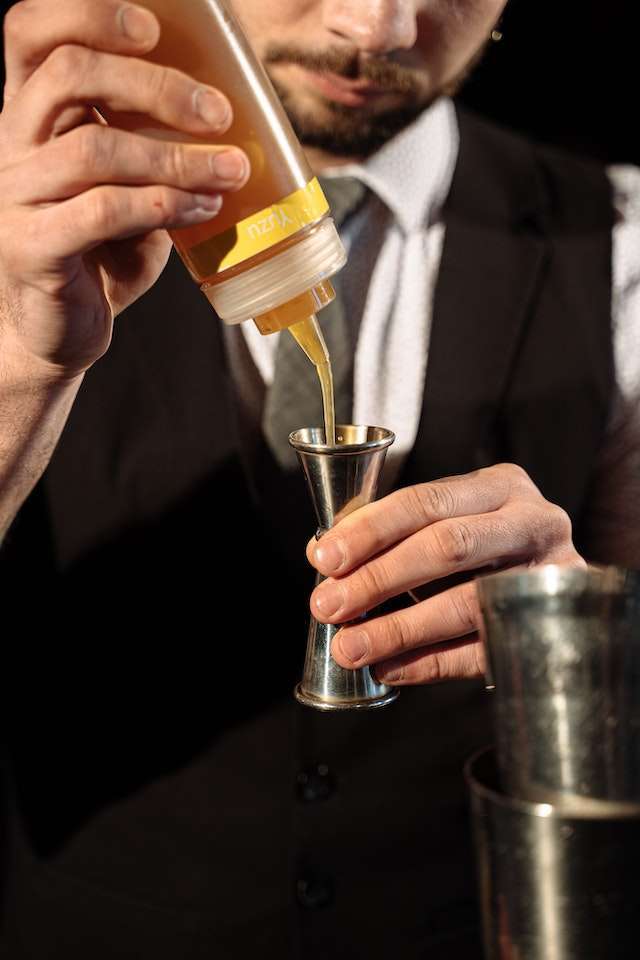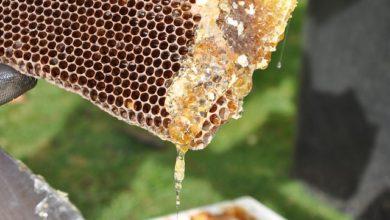The Healing Power of Honey: Exploring Honey as a Natural Antibiotic

Many medical conditions are becoming more difficult to treat due to the increased development of antibiotic-resistant bacteria. Thankfully, there’s an alternative – honey. Not only is honey an effective natural healer, but it is also non-toxic, and anti-microbial. Honey has been used to treat a range of illnesses and infections, and recent research has shown that it can act as an antibiotic.
The Healing Power of Honey: A Natural Alternative
Throughout history, honey has played a vital role in the lives of humans. From its humble beginnings as a natural sweetener to its various applications in medicine, honey has proven itself to be more than just a delectable treat.
History of Honey
Honey, derived from the nectar of flowers, is a sweet, viscous liquid produced by bees through a process of regurgitation and evaporation. This golden elixir has been cherished by civilizations for thousands of years and is a staple in various cultural and culinary practices around the world.
- Ancient civilizations, such as the Egyptians, Greeks, and Romans, revered honey for its medicinal properties, using it to heal wounds and treat ailments.
- In Egyptian culture, honey was even considered a gift from the gods, symbolizing fertility, health, and longevity.
- The use of honey as a natural remedy extended beyond ancient times, with traditional healing systems like Ayurveda and Traditional Chinese Medicine incorporating it into their practices.
Importance of Antibiotics and Their Limitations
With the discovery of antibiotics in the 20th century, conventional medicine took a giant leap forward in the treatment of infectious diseases. Antibiotics, derived from various sources, including synthetic chemicals and natural compounds, have saved countless lives and revolutionized modern healthcare. However, their indiscriminate use has come with limitations and potential side effects.
- Antibiotics are powerful drugs that target and kill bacteria or inhibit their growth, helping the body fight off bacterial infections.
- Although antibiotics have been instrumental in treating numerous ailments, their misuse and overuse have led to antibiotic resistance, rendering certain infections difficult to cure.
- Moreover, antibiotics are ineffective against viral infections, such as the common cold or influenza, as they solely target bacteria.
The Healing Power of Honey as a Natural Alternative:
Recognizing the limitations of antibiotics and the need for alternatives, the healing power of honey has gained significant attention. Honey, with its potent antimicrobial and antioxidant properties, offers a promising natural substitute and a multitude of health benefits.
- Numerous studies have shown honey’s ability to inhibit the growth of various bacteria, including those resistant to antibiotics.
- The high sugar content in honey creates a hostile environment for bacteria, while its low water content limits their ability to thrive.
- Honey also possesses anti-inflammatory properties, promoting wound healing and reducing inflammation in skin conditions like dermatitis and eczema.
- With its natural antioxidants, honey helps combat oxidative stress and supports overall immune function, aiding the body’s own defense mechanisms.
Benefits of Honey
The antibacterial properties of honey make it an ideal remedy for a range of medical conditions and ailments, including:
- Wound and burn healing
- Skin conditions such as acne and eczema
- Urinary tract infections
- Gastroenteritis
- Respiratory infections
Honey is also used as an anti-aging treatment, as it helps to soothe and hydrate the skin. It is believed to reduce signs of aging, and can also slow down the process. Honey is becoming increasingly popular as a natural remedy to promote overall health and wellbeing.
The Composition of Honey and Its Antibacterial Properties
Now, we will explore the chemical makeup of honey, the active components responsible for its antimicrobial activity, and how honey effectively kills bacteria and inhibits their growth.
Chemical Makeup of Honey
Honey is more than just a simple mixture of sugar and water; it is a complex substance that contains a myriad of compounds. The composition of honey can vary depending on factors such as floral source, geographical region, and processing methods. However, the primary constituents found in honey include:
- Sugars: Honey mainly consists of carbohydrates, primarily fructose and glucose. These sugars provide energy and contribute to honey’s sweet taste.
- Organic Acids: Honey contains various organic acids, including gluconic acid, citric acid, and malic acid. These acids contribute to honey’s acidity, acting as natural preservatives and inhibiting bacterial growth.
- Enzymes: Honey contains several enzymes, such as glucose oxidase, diastase, and invertase. These enzymes play crucial roles in honey’s antimicrobial properties and other physiological benefits.
- Amino Acids: Honey contains a small amount of amino acids, the building blocks of proteins. These amino acids contribute to honey’s nutritional value and potential therapeutic effects.
Active Components Responsible for Antimicrobial Activity
While honey’s antimicrobial properties have been recognized for centuries, it is only in recent years that scientists have identified the specific components responsible for this activity. Some of the key active components in honey include:
- Hydrogen Peroxide: Naturally present in honey, hydrogen peroxide has potent antimicrobial properties. It is formed when the enzyme glucose oxidase reacts with glucose, creating a hostile environment for bacteria.
- Phenolic Compounds: Honey contains various phenolic compounds, such as flavonoids and phenolic acids. These compounds exhibit antioxidant and antimicrobial properties, effectively inhibiting the growth of bacteria.
- Methylglyoxal (MGO): Found in significant amounts in certain types of honey, MGO possesses strong antibacterial properties. It disrupts bacterial cell membranes, leading to cell death.
Honey’s Antibacterial Mechanisms
Honey’s antibacterial mechanisms are multifaceted, involving multiple active components working synergistically. Some of the ways honey kills bacteria and inhibits their growth include:
- Osmolarity: Honey’s high sugar content creates a hypertonic environment, drawing water out of bacterial cells through osmosis. This dehydration causes bacterial cells to shrink and eventually die.
- Low pH: Honey’s acidic pH inhibits the growth of many bacteria. Furthermore, the organic acids present in honey disrupt bacterial metabolism and inhibit various enzymatic activities crucial for bacterial survival.
- Enzymatic Production: The enzyme glucose oxidase produces hydrogen peroxide, a potent antimicrobial compound that kills bacteria by damaging their DNA and other cellular components.
The Antibiotic Power of Honey

It’s time to delve into the remarkable effectiveness of honey as an antibiotic, supported by scientific studies, compelling case studies, and a comparison with conventional antibiotics.
Prepare to be astonished by the remarkable evidence that showcases honey’s ability to combat bacteria and promote healing.
Overview of scientific studies and research on honey as an antibiotic:
- Over the years, numerous scientific studies have been conducted to explore the antibiotic properties of honey.
- These studies have consistently revealed that honey possesses powerful antibacterial components, making it an effective natural alternative to conventional antibiotics.
- Researchers have identified a wide range of bacteria that honey can effectively inhibit, including notorious pathogens such as Staphylococcus aureus and Escherichia coli.
Honey’s Antibacterial Mechanisms
- Honey’s unique antibacterial properties stem from its high sugar content, low pH levels, and the presence of various enzymes and antioxidants.
- The high osmotic pressure created by the sugar content dehydrates bacteria, hindering their growth and multiplication.
- Honey’s acidic pH further inhibits bacterial growth, creating an unfavorable environment for pathogens.
- Enzymes present in honey, namely glucose oxidase, produce hydrogen peroxide, a potent antiseptic that kills bacteria.
- Additionally, honey contains antioxidants that neutralize harmful free radicals and promote tissue repair.
Case studies and testimonials supporting honey’s healing properties
1. Case Study: The “Manuka Miracle”
In New Zealand, a type of honey called Manuka honey has gained significant attention for its exceptional antibacterial properties.
- A case study conducted at a New Zealand hospital showcased a remarkable recovery of a patient with a severe antibiotic-resistant infection after receiving Manuka honey treatments.
- The patient’s wound showed significant healing and eradication of bacteria, leading to the conclusion that Manuka honey possesses potent antimicrobial abilities.
2. Testimonial: Sarah’s Healing Journey
- Sarah, a middle-aged woman, shares her personal experience with honey as a natural antibiotic.
- Struggling with recurring sinus infections, Sarah turned to honey after multiple courses of conventional antibiotics proved ineffective.
- Regularly consuming honey and applying it topically, Sarah noticed a remarkable improvement in her symptoms and a decrease in the frequency of infections.
- Sarah’s testimonial serves as a compelling example of honey’s effectiveness in combating bacterial infections.
Comparison of honey’s effectiveness with conventional antibiotics:
- While conventional antibiotics have undoubtedly been instrumental in treating bacterial infections, the rise of antibiotic resistance poses a significant challenge.
- Honey, on the other hand, demonstrates remarkable effectiveness against antibiotic-resistant pathogens, making it an attractive alternative.
- Additionally, honey’s natural composition eliminates concerns about potential side effects or adverse reactions that may arise with the use of pharmaceutical antibiotics.
- However, it is important to note that honey’s use as an antibiotic should not replace professional medical advice, and further research is necessary to fully understand its potential.
Honey’s Broad Spectrum of Antibacterial Activity
In recent years, research has revealed numerous health benefits of honey, including its remarkable antibacterial activity. This section explores the effectiveness of honey against various types of bacteria, delves into its potential to combat drug-resistant strains, and highlights its promising role in fighting antibiotic-resistant infections.
Honey’s Effectiveness Against Various Types of Bacteria
Honey exhibits a broad spectrum of antibacterial activity, making it effective against a wide range of bacterial pathogens. Numerous studies have shown honey’s efficacy in inhibiting the growth of both Gram-positive and Gram-negative bacteria.
Gram-positive bacteria, such as Staphylococcus aureus and Streptococcus pyogenes, are commonly associated with skin infections, while Gram-negative bacteria, including Escherichia coli and Pseudomonas aeruginosa, are notorious for causing urinary tract and respiratory tract infections.
- Mechanisms of Action:
Honey’s antibacterial properties can be attributed to various factors, including its low water activity, acidic pH, and the presence of hydrogen peroxide. Additionally, some honey varieties contain unique compounds like methylglyoxal (MGO) and bee defensin-1, which further enhance its antibacterial effects. The combination of these factors creates an unfavorable environment for bacterial growth and disrupts their vital processes, ultimately leading to their demise.
- Effective Against Biofilms:
Biofilms, which are complex communities of bacteria embedded within a protective matrix, pose a challenge in treating chronic infections. However, honey has exhibited the ability to penetrate and inhibit the formation of biofilms, rendering it effective even in cases where conventional antibiotics fail. This breakthrough discovery has opened new avenues in the fight against persistent and recurrent infections.
Exploration of Honey’s Ability to Combat Drug-Resistant Strains
The emergence of drug-resistant bacteria, often referred to as “superbugs,” has become a global health concern. Conventional antibiotics are losing their effectiveness, necessitating the search for alternative antimicrobial agents. Honey, with its multifaceted antibacterial properties, has shown promise in combating drug-resistant strains.
- Overcoming Antibiotic Resistance Mechanisms:
Unlike conventional antibiotics that typically target specific bacterial cellular components, honey’s complex composition makes it difficult for bacteria to develop resistance.
Moreover, its ability to disrupt biofilms and interfere with bacterial communication systems makes it a formidable adversary against drug-resistant strains. Honey’s effectiveness remains undiminished, even against bacteria that have developed mechanisms to counteract conventional antibiotics.
- Enhanced Synergy with Antibiotics:
Studies have shown that honey can act synergistically with conventional antibiotics, potentiating their effects and increasing bacterial susceptibility. This combination therapy presents a promising approach to combating drug-resistant infections by overcoming bacterial resistance mechanisms.
Furthermore, the addition of honey can lower the required antibiotic dosage, potentially reducing side effects and improving patient outcomes.
Potential for Honey to Be Used Against Antibiotic-Resistant Infections
The alarming rise in antibiotic-resistant infections necessitates the exploration of alternative treatment options. Honey, with its broad spectrum of antibacterial activity and natural origin, holds immense potential in addressing this pressing issue.
- Clinical Trials and Future Perspectives:
Preliminary clinical trials have demonstrated the effectiveness of honey in treating antibiotic-resistant infections, indicating its therapeutic value.
However, further research is needed to establish standardized protocols, dosage regimens, and to expand the understanding of honey’s mechanisms of action. The future possibilities also involve the development of honey-based formulations, such as gels or creams, for targeted application in treating specific infections.
- Promoting Responsible Use of Antibiotics:
Incorporating honey as an adjunct or alternative therapy could contribute to reducing the reliance on antibiotics and preserving their efficacy. With mounting evidence supporting honey’s antibacterial activity, healthcare professionals and policymakers must consider its integration into clinical practice and promote responsible use to combat the crisis of antibiotic resistance effectively.
Other Health Benefits of Honey
Here are some of the lesser-known yet remarkable health benefits of honey, including its wound healing properties, anti-inflammatory effects, and antioxidant properties.
Wound Healing Properties of Honey
One of the remarkable qualities of honey lies in its ability to accelerate the healing process of wounds. Throughout history, honey has been used as a natural remedy for various skin ailments, including cuts, burns, and ulcers. This extraordinary feature can be attributed to its unique composition.
Honey possesses both antibacterial and antifungal properties, making it an effective natural alternative to conventional wound dressings. Its aptitude to create an unfavorable environment for bacteria and promote tissue regeneration has made it an integral component in wound care. Studies have shown that honey not only reduces healing time but also minimizes the risk of infections and scarring.
Moreover, honey’s viscous texture creates a protective barrier over the wound, preventing dirt and debris from entering while keeping the area moist. This moist environment proves vital for the growth of fibroblasts, the cells responsible for producing collagen and aiding in the formation of new skin.
Honey’s Anti-inflammatory Effects
Aside from wound healing, honey exhibits significant anti-inflammatory properties. Chronic inflammation has been linked to various health conditions, including heart disease, diabetes, and cancer. Honey, with its rich antioxidant content, can help combat inflammation within the body.
The anti-inflammatory effects of honey are attributed to compounds such as flavonoids and phenolic acids, which contribute to reducing oxidative stress and suppressing inflammatory markers. By lowering inflammation, honey may alleviate symptoms associated with conditions like arthritis and asthma, offering relief to those who suffer from these ailments.
Antioxidant Properties of Honey
In the quest for optimal health, the role of antioxidants cannot be understated. Antioxidants are compounds that help protect the body against the damaging effects of free radicals, unstable molecules that can cause cellular damage and contribute to various diseases.
Honey contains a wide array of antioxidants, including phenols, enzymes, flavonoids, and organic acids. These antioxidants work synergistically to neutralize free radicals, reducing oxidative stress and promoting overall health. Regular consumption of honey has been linked to a decreased risk of chronic diseases, such as cardiovascular disorders and cancer.
Furthermore, the antioxidant properties of honey have been found to support brain health, improve cognitive function, and enhance memory. Research suggests that honey’s antioxidants may protect the brain against oxidative damage and age-related cognitive decline, potentially contributing to cognitive longevity.
Practical Uses of Honey as a Natural Antibiotic
In this section, we explore the practical uses of honey as a natural antibiotic. From topical wound treatment to incorporating it into our diet and daily routines, honey proves to be a versatile and effective remedy. However, it is important to take precautions and consider certain factors when using honey in this way.
Recommendations for Using Honey as a Topical Wound Treatment
- Cleanse the wound: Before applying honey, thoroughly cleanse the affected area with mild soap and clean water.
- Choose the right honey: Opt for raw, unpasteurized honey as it retains its natural antibacterial properties. Sourwood honey, specifically, has shown remarkable healing properties due to its high antibacterial activity.
- Apply a thin layer of honey: Gently spread a thin layer of honey directly onto the wound or use a sterile gauze or dressing to hold the honey in place.
- Cover the wound: Use a bandage or dressing to cover the honey-coated wound to protect it from external factors and promote healing.
- Regularly change the dressing: Replace the honey and dressing every 24 to 48 hours, ensuring proper cleanliness and preventing potential infections.
Suggestions for Incorporating Honey into Diet and Daily Routines
- Honey as a sweetener: Replace refined sugar with honey in your beverages, such as tea or coffee, and in recipes for baking, cooking, and salad dressings.
- Honey in breakfast: Drizzle honey on your cereal, yogurt, or oatmeal for a natural and nutritious sweetener.
- Honey as a spread: Enjoy honey as a delicious and healthy alternative to spreads like jam or butter on your toast or pancakes.
- Honey-infused beverages: Mix honey with warm water, lemon, and ginger for a soothing and immune-boosting drink.
- Honey face mask: Create a DIY face mask by combining honey with other natural ingredients like yogurt or avocado for a rejuvenating and hydrating treatment.
Precautions and Considerations when Using Honey as a Natural Antibiotic:
- Allergies and sensitivities: Individuals with allergies to bee products should avoid using honey as a natural antibiotic or should consult a medical professional beforehand.
- Effects on blood sugar levels: Diabetic individuals should monitor their blood sugar levels closely when incorporating honey into their diet.
- Suitable for minor wounds: Honey is generally effective for treating minor wounds, burns, and abrasions. However, for severe or infected wounds, medical attention should be sought immediately.
- Hygiene and quality: Only use high-quality, pure honey from trusted sources to ensure its effectiveness as a natural antibiotic. Contaminated or adulterated honey may not provide the desired healing properties.

Conclusion
Honey is a powerful natural remedy with many therapeutic properties. Not only is it non-toxic and anti-microbial, but it can also act as an effective antibiotic. Honey has been used to treat a range of infections and ailments for centuries, and with so many benefits, it’s no wonder why honey is becoming increasingly popular.
Whether you’re using it for preventative purposes or treating a medical condition, honey is an ideal natural remedy for overall health and wellbeing.
FAQ’S
How does honey work as an antibiotic?
- The antimicrobial powers of honey are made up of two components; hydrogen peroxide and non-peroxide factors. Hydrogen peroxide is a compound produced as a by-product of the bees’ metabolism, while the non-peroxide factors contribute to the antibacterial effects of honey.
Are there any scientific studies that support the healing properties of honey?
- Yes, several scientific studies have investigated the antimicrobial properties of honey. Research has shown its effectiveness against various bacteria, including antibiotic-resistant strains like MRSA. While more studies are still needed, the existing evidence showcases honey’s potential as an alternative natural antibiotic.
Can honey be used to replace conventional antibiotics?
- Honey should not be used as a direct replacement for prescribed antibiotics in serious infections. However, it can be used as a complementary therapy or for minor infections, when appropriate.
- It’s essential to consult with a healthcare professional for proper diagnosis and to determine the best course of treatment.
How should honey be applied topically for wound healing?
- To use honey topically, clean the wound thoroughly and then apply a thin layer of honey directly to the affected area. Cover the wound with a sterile bandage or dressing. The honey promotes a moist environment, which aids healing and prevents infection.
Can anyone use honey as a natural antibiotic?
- Whilez honey is generally safe for most people, it should be avoided in infants under one year old due to the risk of botulism.
- Additionally, individuals with known honey allergies should refrain from using honey as a natural antibiotic. If you have any concerns or medical conditions, consult with your healthcare provider before using honey as a treatment.
Are there any specific types of honey that are more effective as natural antibiotics?
- Sourwood honey, derived from the Sourwood tree, is often regarded as the most potent in terms of its antimicrobial properties. Sourwood honey contains an additional compound called methylglyoxal, which enhances its antibacterial effectiveness. However, other types of honey, such as Manuka, also possess healing properties and can be beneficial.
How should honey be stored for maximum potency as a natural antibiotic?
- To preserve its potency, honey should be stored in a cool, dry place away from direct sunlight.
- Avoid exposure to heat or moisture, as it can degrade the honey’s antimicrobial properties. When stored properly, honey can have a long shelf-life.
Can honey be used for everyday health maintenance?
- Absolutely! Consuming honey regularly can provide additional health benefits beyond its antibiotic properties. It contains antioxidants, vitamins, and minerals that can support overall well-being. However, moderation is key, as honey is still a natural sweetener and should be consumed in appropriate quantities as part of a balanced diet.
Where can I find quality honey for medicinal purposes?
- To ensure you are purchasing high-quality honey, seek out reputable honey producers or beekeepers in your area. Look for honey that is minimally processed and preferably labeled as raw or organic. These types of honey are more likely to retain their natural healing properties.




